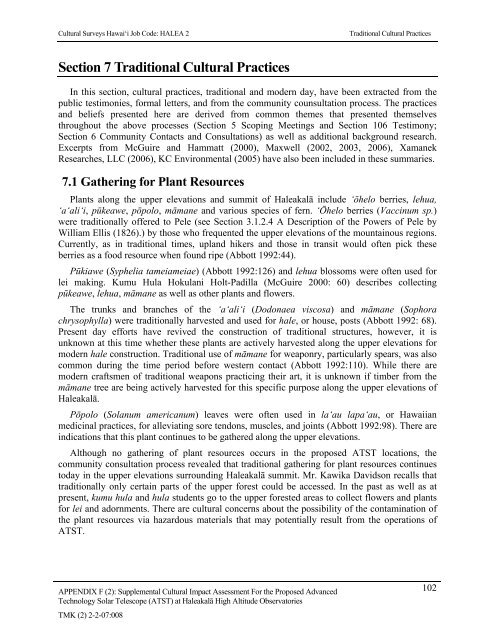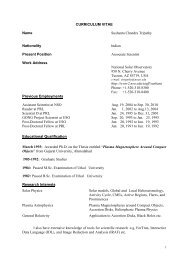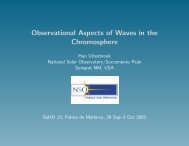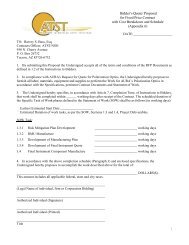F2 - ATST
F2 - ATST
F2 - ATST
Create successful ePaper yourself
Turn your PDF publications into a flip-book with our unique Google optimized e-Paper software.
Cultural Surveys Hawai‘i Job Code: HALEA 2Traditional Cultural PracticesSection 7 Traditional Cultural PracticesIn this section, cultural practices, traditional and modern day, have been extracted from thepublic testimonies, formal letters, and from the community counsultation process. The practicesand beliefs presented here are derived from common themes that presented themselvesthroughout the above processes (Section 5 Scoping Meetings and Section 106 Testimony;Section 6 Community Contacts and Consultations) as well as additional background research.Excerpts from McGuire and Hammatt (2000), Maxwell (2002, 2003, 2006), XamanekResearches, LLC (2006), KC Environmental (2005) have also been included in these summaries.7.1 Gathering for Plant ResourcesPlants along the upper elevations and summit of Haleakalā include ‘ōhelo berries, lehua,‘a‘ali‘i, pūkeawe, pōpolo, māmane and various species of fern. ‘Ōhelo berries (Vaccinum sp.)were traditionally offered to Pele (see Section 3.1.2.4 A Description of the Powers of Pele byWilliam Ellis (1826).) by those who frequented the upper elevations of the mountainous regions.Currently, as in traditional times, upland hikers and those in transit would often pick theseberries as a food resource when found ripe (Abbott 1992:44).Pūkiawe (Syphelia tameiameiae) (Abbott 1992:126) and lehua blossoms were often used forlei making. Kumu Hula Hokulani Holt-Padilla (McGuire 2000: 60) describes collectingpūkeawe, lehua, māmane as well as other plants and flowers.The trunks and branches of the ‘a‘ali‘i (Dodonaea viscosa) and māmane (Sophorachrysophylla) were traditionally harvested and used for hale, or house, posts (Abbott 1992: 68).Present day efforts have revived the construction of traditional structures, however, it isunknown at this time whether these plants are actively harvested along the upper elevations formodern hale construction. Traditional use of māmane for weaponry, particularly spears, was alsocommon during the time period before western contact (Abbott 1992:110). While there aremodern craftsmen of traditional weapons practicing their art, it is unknown if timber from themāmane tree are being actively harvested for this specific purpose along the upper elevations ofHaleakalā.Pōpolo (Solanum americanum) leaves were often used in la‘au lapa‘au, or Hawaiianmedicinal practices, for alleviating sore tendons, muscles, and joints (Abbott 1992:98). There areindications that this plant continues to be gathered along the upper elevations.Although no gathering of plant resources occurs in the proposed <strong>ATST</strong> locations, thecommunity consultation process revealed that traditional gathering for plant resources continuestoday in the upper elevations surrounding Haleakalā summit. Mr. Kawika Davidson recalls thattraditionally only certain parts of the upper forest could be accessed. In the past as well as atpresent, kumu hula and hula students go to the upper forested areas to collect flowers and plantsfor lei and adornments. There are cultural concerns about the possibility of the contamination ofthe plant resources via hazardous materials that may potentially result from the operations of<strong>ATST</strong>.APPENDIX F (2): Supplemental Cultural Impact Assessment For the Proposed AdvancedTechnology Solar Telescope (<strong>ATST</strong>) at Haleakalā High Altitude ObservatoriesTMK (2) 2-2-07:008102
















